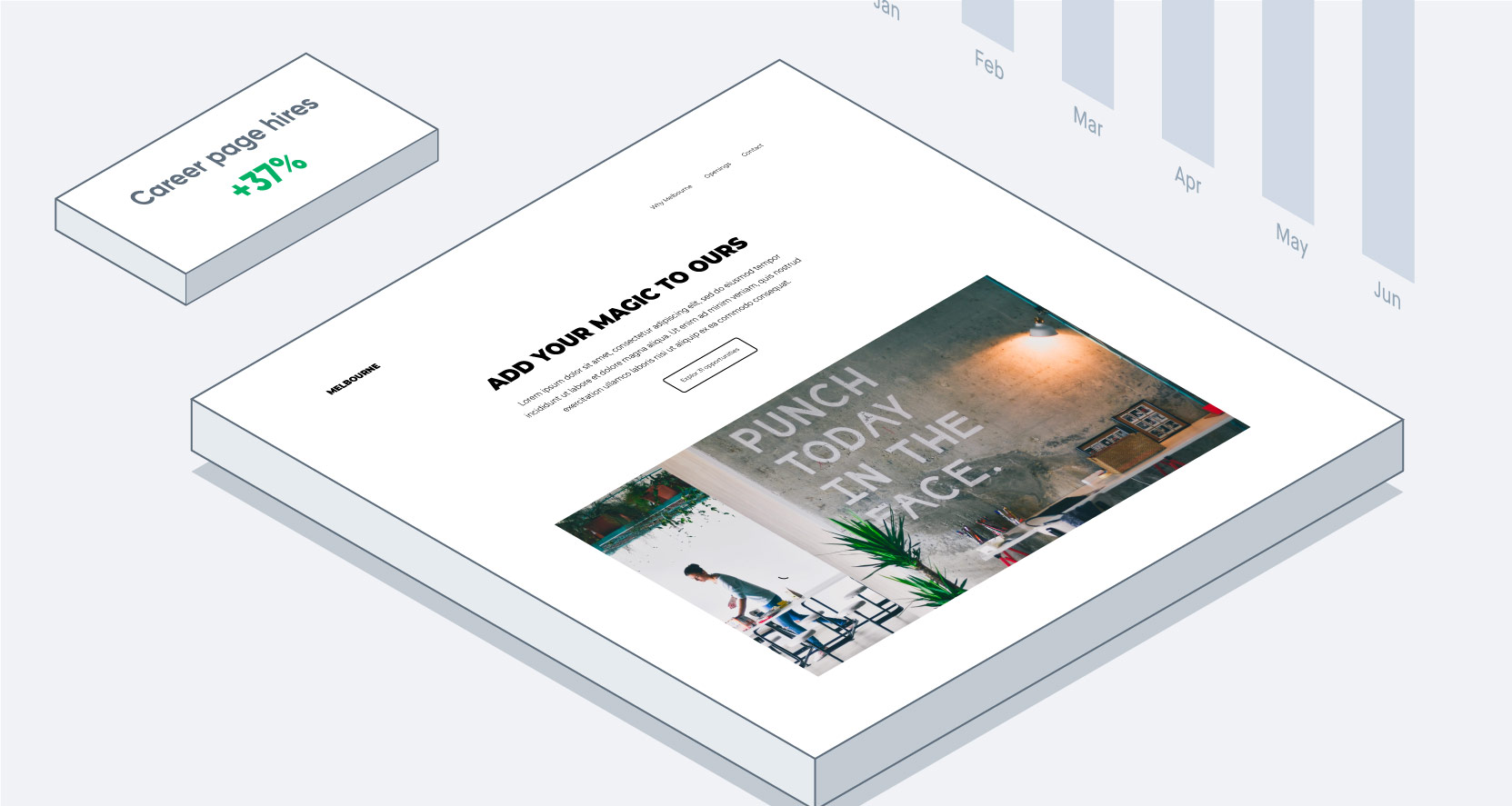The need for highly skilled professionals remains high among employers worldwide in the present day. The challenging truth is that businesses aiming to prosper in this competitive landscape must prioritize their workforce by making the most of their extensive talent acquisition data sets, which are likely to be substantial.
It’s no longer enough to simply rely on gut instinct or basic metrics to make informed decisions about the talent to bring on board and retain at your organization. That’s where talent analytics comes into play.
According to the 2022 World of Work Trends, 76% of top employers already use talent analytics to assess their progress in recruiting and hiring
The increasing competition for skilled workers has created a demand for more comprehensive HR/TA data, prompting talent acquisition leaders to seek valuable insights into the individuals and skills required for sustained success
Talent analytics is a strategic tool that empowers recruiting and TA teams to surpass basic metrics and acquire a profound comprehension of the talent within their database. To put it simply, those who neglect to make use of data power are effectively turning a blind eye to the requirements for their organization's future success.
.png?width=3068&height=2406&name=Screenshot%202023-07-14%20at%2011.06.27%20(1).png)
The power of talent analytics
Improve application completion rates. Better recruitment marketing engagement. More opens of and replies to nurture emails. Talent analytics empowers enterprise recruiting teams like to operate smarter and faster and improve key facets of their TA efforts such as these
By leveraging talent analytics, you can gain valuable insights into your current recruitment marketing strategies’ effectiveness, identify improvement areas, and make data-driven decisions to enhance your talent acquisition process.
This could mean a wide range of activities, from monitoring crucial performance metrics like, campaign cost, time to fill, and cost per hire, as well as analyzing candidate data throughout the onboarding and retention process. Such analysis provides valuable insights into the most effective sourcing channels and tools for attracting exceptional talent.
With robust, real-time talent analytics at your disposal, you can make more strategic decisions throughout your TA process, resulting in greater success in attracting, hiring, and retaining top talent.
.png?width=3070&height=2452&name=Screenshot%202023-07-14%20at%2011.05.00%20(1).png)
“Data-driven talent acquisition teams are more likely to be successful than organizations hiring blindly,” Society for Human Resource Management Online News Manager & Editor Roy Maurer recently wrote.
Benefits of talent analytics
Talent analytics stands as one of the most potent tools at the disposal of organizations, allowing them to acquire a comprehensive understanding of their recruitment processes, pinpoint areas for enhancement, and make data-driven decisions with confidence.
Below are the main applications of talent analytics that can bring a transformative impact to your organization's talent acquisition process, leading to enhanced success in attracting, hiring, and retaining exceptional talent.
1. Identify key talent acquisition metrics
Talent analytics is a transformative tool that empowers companies to quickly identify the most critical recruitment marketing metrics. With the ability to track key performance metrics such as time to source-of-hire, social engagement, time-to-fill, cost per hire, and quality of hire, talent acquisition leaders can gain a deeper understanding of the effectiveness of their hiring strategies.
By consistently measuring these metrics, recruiters can make well-informed decisions regarding the most effective sourcing channels, tools, and processes for their organization.
For example, which channel performs better, which campaign had proved to be more successful, and which method of contacting candidates yields the best results? However, don’t just grab a list of another company’s goals. What is unique to your business?
Though time to fill measures the duration between posting a job and filling the position, it does not take into account the quality of the hire. Conversely, time to hire refers to the time span from initiating the hiring process to the acceptance of the job offer, serving as an indicator of the efficiency of the recruitment marketing and recruitment process.
2. Improve the candidate experience
Talent analytics is a transformative tool that can help companies create a more positive candidate experience throughout the recruitment process. By analyzing recruiting data, TA team can gain valuable insights into the most effective ways to attract top-tier talent.
This could include streamlining the candidate’s journey from hi to apply, optimizing each of the candidate’s touch points, and application processes, and improving communication between candidates and recruiters.
3. Help keep hiring managers engaged
One area that often gets overlooked is the importance of hiring managers. If they’re not satisfied with the recruitment process, it can hold things up and cause delays in getting new talent on board.
On the other hand, if they’re happy with the quality of the candidates and the speed at which positions are filled, they can be instrumental in making the recruitment process successful.
4. Eliminate bias
It is possible for recruiting managers to have reservations about race, gender, and other external factors. Such biased-driven recruitment makes it more likely to miss out on exceptionally talented candidates and choose incorrect fits for the job.
But when you incorporate data in your hiring process, it will not consider any external biases or stereotypes except the candidate's skills and alignment with the company's goals. Data-driven analytics will eliminate wrong first impressions and base your hiring process on accurate and impartial facts.
5. Target appropriate job candidates
With advanced talent acquisition analytics, companies can pinpoint suitable candidates based on the organization's vision, find them, and connect with them.
With detailed data-driven insights pinpointing the right skill set and characteristics, you can narrow down the right platform to post job requirements and curate a job description that would appeal to the targeted candidates.
Implementing talent analytics
In the current highly competitive job market, it is crucial not to adopt a passive approach when implementing talent analytics. Employing talent analytics can assist you in identifying optimal recruitment strategies, enhancing the candidate experience, retaining exceptional employees, and forecasting future talent requirements.
SmartDreamers’ Talent Analytics module helps talent acquisition teams make data-driven decisions with a real-time reporting dashboard. Track KPIs, optimize the performance of your sourcing channels, and understand your visitors within minutes.
1. Setting clear objectives
It is important to establish clear goals and objectives for talent acquisition, with a specific focus on the key performance indicators (KPIs) that your organization has identified. These KPIs could include metrics such as time to hire, source of hires, CTR, CPC, career site traffic etc. By tracking your progress against these KPIs, you can effectively monitor and measure the success of your talent acquisition efforts.
Let’s use an example of Number of Applicant as our KPI and walk through the process of how talent analytics can accelerate and supercharge this one key area of recruitment success.
2. Gather data
To start, you need to collect data on the number of candidates that lands in your recruitment pipeline. This data can come from any source you’re using in your process, whether it’s your applicant tracking system (ATS), Excel spreadsheets, or other data-gathering tools, like GA4.
SmartDreamers tracks the user’s journey from hi to apply, collecting data about their touchpoints, within different channels, up till they apply.
Once you’ve collected the data, you need to analyze it to gain insights into your recruitment process.
3. Analyzing talent analytics data
Utilize SmartDreamers' analytical dashboards and techniques to extract valuable insights from the collected data. By examining trends and patterns, you can identify factors that influence your key performance indicators (KPIs) and pinpoint areas that require improvement.
4. Acting on the insights
The real-time data dashboards in SmartDreamers help to create data-driven strategies to improve recruitment and retention processes and ultimately achieve KPIs.
If you observe a low volume of applications and conversions, it may indicate potential issues with your sourcing efforts. It is possible that your campaign is not reaching a broad enough audience or targeting the appropriate candidate pools, or perhaps your audience is not on that platform.
5. Evaluating your performance
Continuously monitor and evaluate the success of your strategies by analyzing your KPIs and adjusting your approach as needed.
By tracking key performance indicators you can gain valuable insights into your recruiting marketing effectiveness. But it’s not enough to analyze these metrics once and forget about them.
Successful recruiting marketing teams continue to monitor them over time to make data-driven decisions and improve processes. This is crucial because the recruitment landscape is continuously evolving, and strategies that were effective in the past may not yield the same results in the present year.
Conclusion
In an ever-changing landscape of talent acquisition, organizations that leverage talent analytics to adapt their recruitment marketing strategy will gain a distinct competitive advantage.
By incorporating robust, real-time talent analytics into your business, you can ensure that your org makes the best possible people decisions, leading to tremendous talent acquisition success.
Learn how SmartDreamers complete talent acquisition suite for enterprises, can help your TA team make smarter, faster decisions.








